On April 18th, we celebrate Velociraptor Awareness Day. Velociraptor became a household name when Steven Spielberg introduced it to the world in his 1993 classic film, Jurassic Park. According to the movie and its sequels, this animal was a vicious, man-sized creature. It boasted a leathery hide and heightened levels of intelligence. It could attack prey in groups. Then, it would disembowel it with one strike of the sickle-shaped talon on each foot. At least, that’s how Hollywood generally portrays Velociraptor.
The views expressed in this article reflect those of the author, and not necessarily those of New Creation.
As it turns out, the real Velociraptor was quite different from its portrayal on the big screen. Perhaps the biggest disparity is that paleontologists believe that Velociraptor had more in common with birds than it did with reptiles. It is even thought to have been completely covered in feathers! If you ran into a Velociraptor in its natural habitat, you might mistake it for a flightless, predatory bird at first glance!
This makes Velociraptor a curious animal from a young-earth creationist perspective. Did it really have feathers? How does it fit into our perception of distinctly created organisms in the beginning? Do all of its bird-like characteristics suggest Velociraptor was related to birds?
Meet the REAL Velociraptor
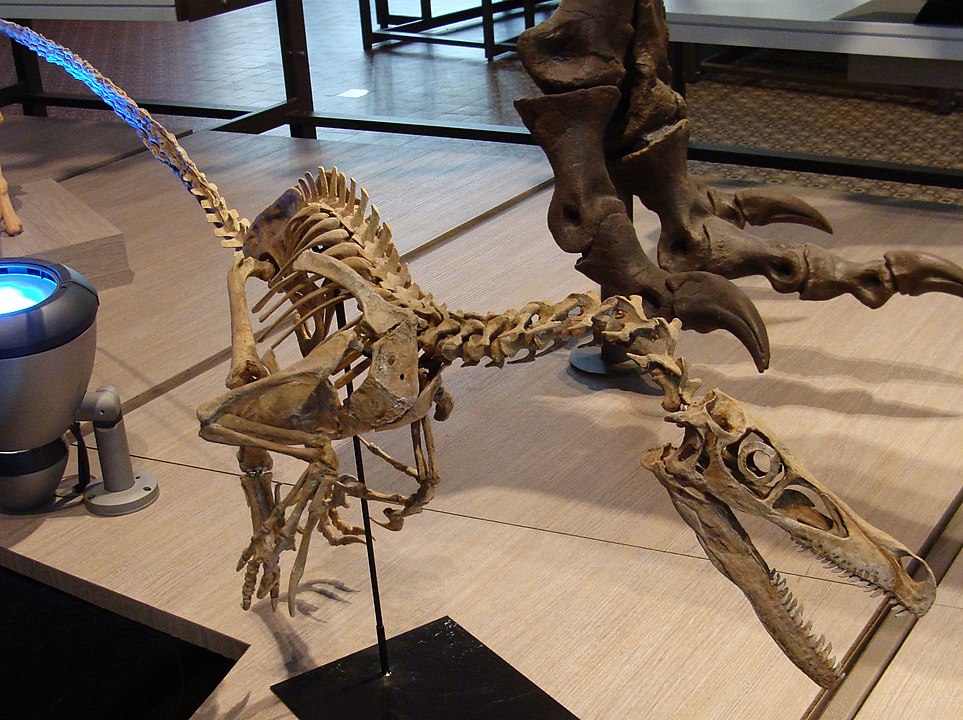
Meaning “swift thief from Mongolia,” Velociraptor mongoliensis is a genus belonging to the dromaeosaur (“raptor”) family. Like other theropods (“meat-eating” dinosaurs), sharp teeth loaded this two-legged creature’s skull and dagger-like claws grew from its hands. Out the back, it had a long tail wrapped in a mass of stiff tendons. This formed a solid, bony rod that was only mobile at the base. It would have helped Velociraptor remain perfectly balanced while walking or running. Studies of its inner ear structure confirm that it was a very agile dinosaur.1
There is a very important thing about this dinosaur that we should get straight: the real Velociraptor was far smaller than its Hollywood counterpart! At about six or seven feet long, it weighed about as much as a large, domestic turkey, 33-40 pounds.
Velociraptor had all of the essential tools for being an agile and efficient predator. Its low, narrow skull and upturned snout distinguished it from other dromaeosaurs and was perfect for snatching up small, fast-moving prey. In addition to great senses of sight, hearing, and smell, comparisons of the shape of its sclerotic (eye) rings to those of modern birds and reptiles indicates it was nocturnal, doing most of its hunting at night.2
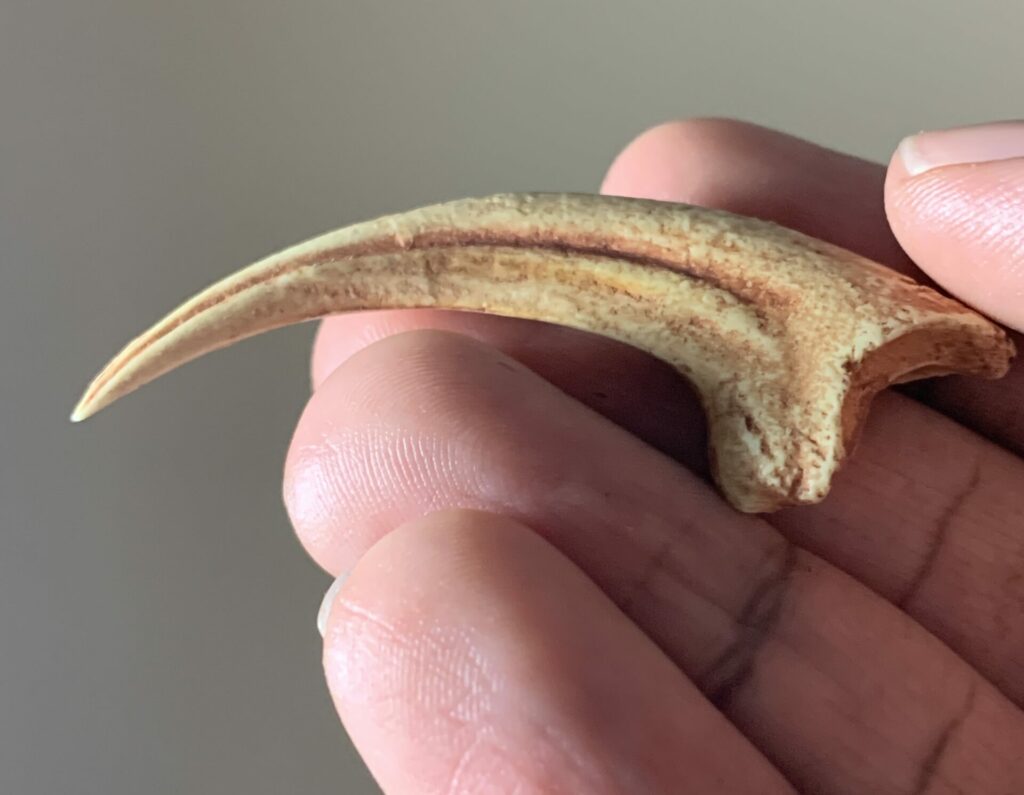
Like all dromaeosaurs, Velociraptor had an enlarged sickle-shaped talon on each foot. It was about two inches long, roughly the size of those possessed by the bald eagle. Contrary to popular belief, this talon didn’t have the right shape for slashing prey open.3 More likely, Velociraptor primarily used it for pinning down small animals. It kept its prey in place while it pulled off bite-sized chunks with its jaws, much like the red-legged seriama, a type of predatory bird, does today.4,5
Just How Bird-like Was Velociraptor’s Skeleton?

The first Jurassic Park film alludes to the bird-like qualities of Velociraptor. One of the paleontologists in the movie, Dr. Alan Grant, explains to the rest of his dig team that Velociraptor had more in common with birds than it did with reptiles.
He points out that the animal has special bones in its wrists that are shaped like crescent moons. These are called semilunate carpals. They allowed the animal to fold its hand in the same manner in which birds fold their wings to the sides when they are not using them. In most theropod (meat-eating) dinosaurs, the pubic bone is pulled forward. But Dr. Grant points out that the pubic bone of Velociraptor is turned backward, just like a bird. He also describes the animal’s vertebrae as filled with open cavities that connected to a series of air sacs. Like birds today, these air sacs integrated into the animal’s respiratory system.
But Velociraptor had other bird-like traits as well, like a wishbone. In birds, the wishbone serves as the brace for the chest that makes flight possible. Velociraptor was an important discovery because it clued paleontologists in on just how bird-like some dinosaurs really were.
But Did It Have Feathers?
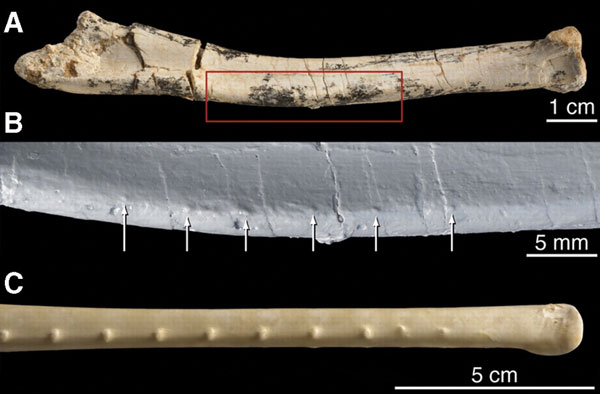
B: The portion of the bone with the quill knobs magnified
C: A modern turkey vulture ulna for comparison
Adapted for use in accordance with federal copyright (fair use doctrine) law. Usage by the New Creation blog does not imply endorsement of copyright holders.
There is substantial evidence showing that Velociraptor and its kin had feathers. In 2007, scientists reported a forearm bone from a Velociraptor (or possibly its close relative, Tsaagan6) with a series of regularly spaced bumps. Each is approximately four millimeters apart and correspond to those seen in modern birds. We call these feather attachment points quill knobs.7 A closely-related species described in 2015, called Zhenyuanlong, has feathers along its arms, forming wings, and running down its tail. It was about the same size as Velociraptor, giving us an idea of what Velociraptor may have looked like in life.8
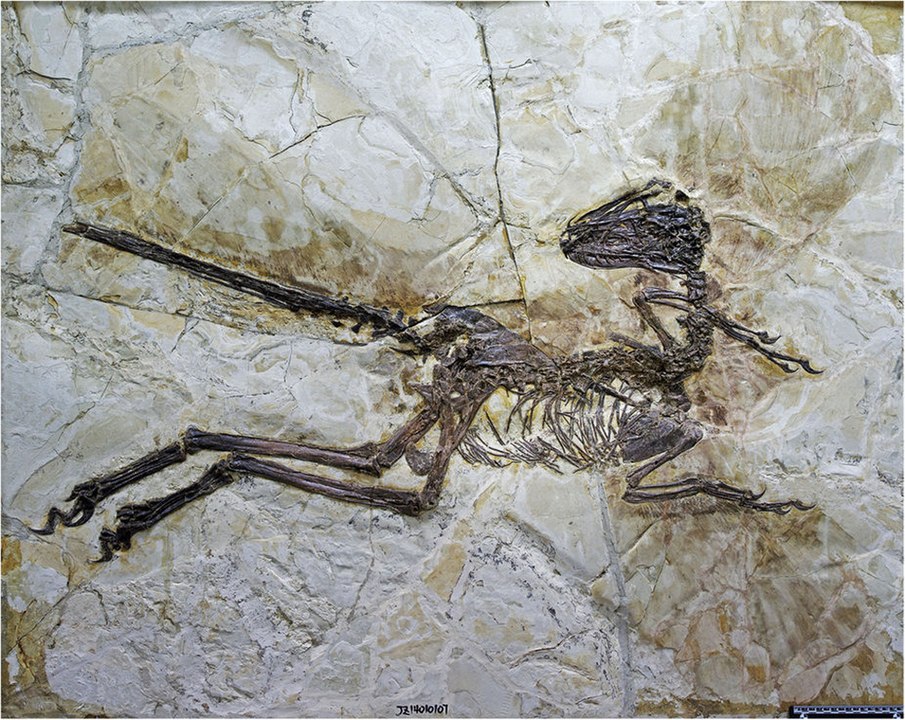
Not all dromaeosaurs (the “raptor” family) have been found with direct or even indirect evidence of feathers. However, when researchers do find specimens with preserved body covering, these so far only show dromaeosaurs to have feathers. Some smaller dromaeosaur species, otherwise completely feathered, showcase tiny scales on the bottoms of their feet9 (much like modern birds). But none have been found completely covered in scales. From this, we deduce the most likely conclusion is that all dromaeosaurs had feathers until evidence arises to suggest otherwise. This is similar logic we might use when we find fossils of a bird. Since all birds today, and any within the fossil record that possess preserved body coverings, have feathers, we should assume that any fossilized bird we find without preserved body covering had feathers as well.
How Did Velociraptor Use Its Feathers?
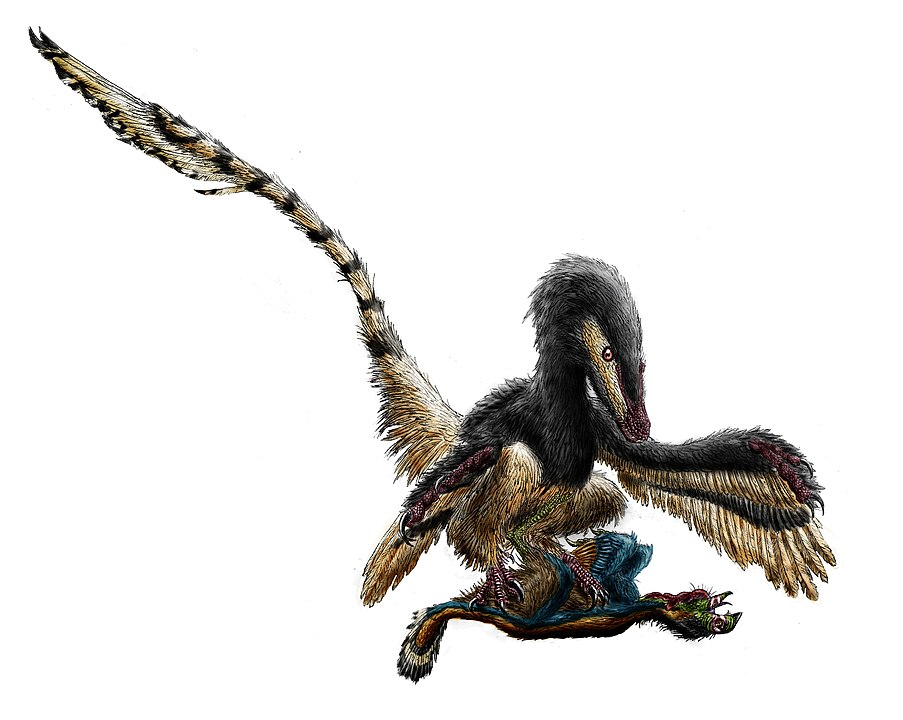
Despite having feathers, Velociraptor could not fly. Its arms were much too short compared to the size of its body to become airborne. So why did it have feathers at all? While paleontologists cannot say with certainty, they can get some ideas by watching modern animals with feathers: birds.10 It is possible that Velociraptor used its feathers to control its movement while leaping, climbing, or changing direction while running. It may also have used its feathers to shelter its eggs, as other non-avian dinosaurs and modern birds are known to do. Another possible use was display. Birds often use their feathers today to attract potential mates and deter rivals.
One recently suggested idea is called Raptor Prey Restraint (RPR).11 This hypothesis proposes that Velociraptor may have used its wings to keep its balance as it pinned down smaller animals. Birds of prey, like eagles and hawks, do this today.
Was Velociraptor a Bird Ancestor?
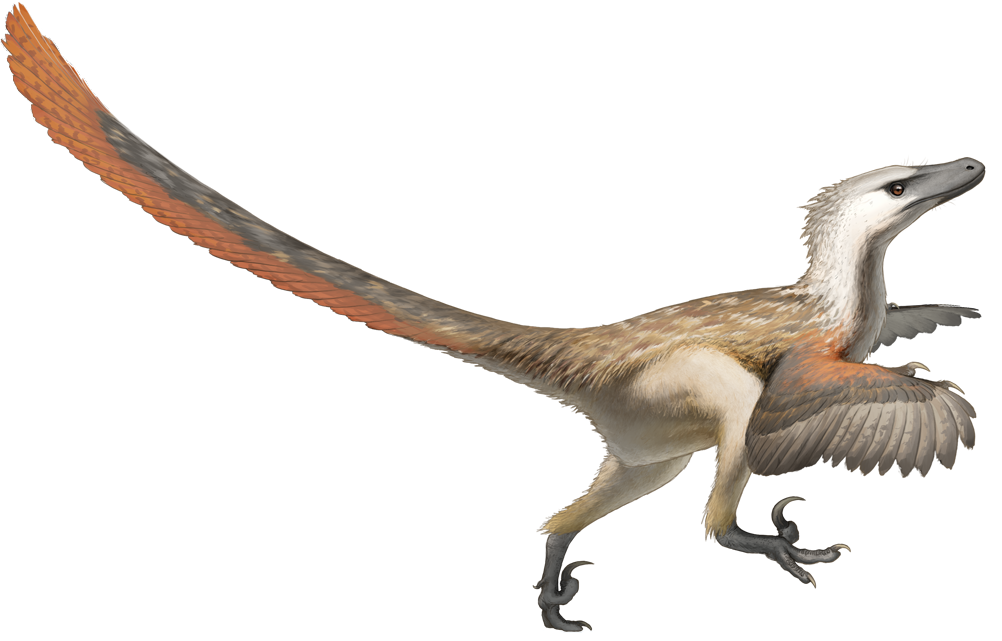
As expressed above, Velociraptor can be seen as a “mosaic form.” It possesses a variety of bird-like characteristics, including feathers, a backward-pointing pubic bone, a wishbone, and semilunate carpal bones in its wrists, enabling it to fold its wing much like modern birds do. It was probably warm-blooded, as implied by the presence of feathers. But it also had features reminiscent of reptiles, including a beakless jaw and a long bony tail.
These and other discoveries have led conventional evolutionary paleontologists to link Velociraptor with the evolution of birds from reptiles. It is important to understand that they do not think Velociraptor itself was a direct ancestor of modern birds. Nevertheless, it is thought to represent what the alleged ancestor of all birds may have been like.
Is this correct? To find out, we must examine the evidence.
Raptors of a Feather Flock Together
Velociraptor is far from the only dinosaur known to possess features of both birds and reptiles. Over the past several decades, paleontologists have found a plethora of such creatures. Some, like Sinosauropteryx, largely resembled other theropods, aside from the fact that they had feathers. Others, like Caudipteryx, were so similar to birds that paleontologists confused them as such in the past. Collectively, conventional paleontologists argue that these dinosaurs display an anatomical continuum that connects them with birds.12 In other words, they believe these fossils blur any notion of a line that separates birds and non-bird dinosaurs.
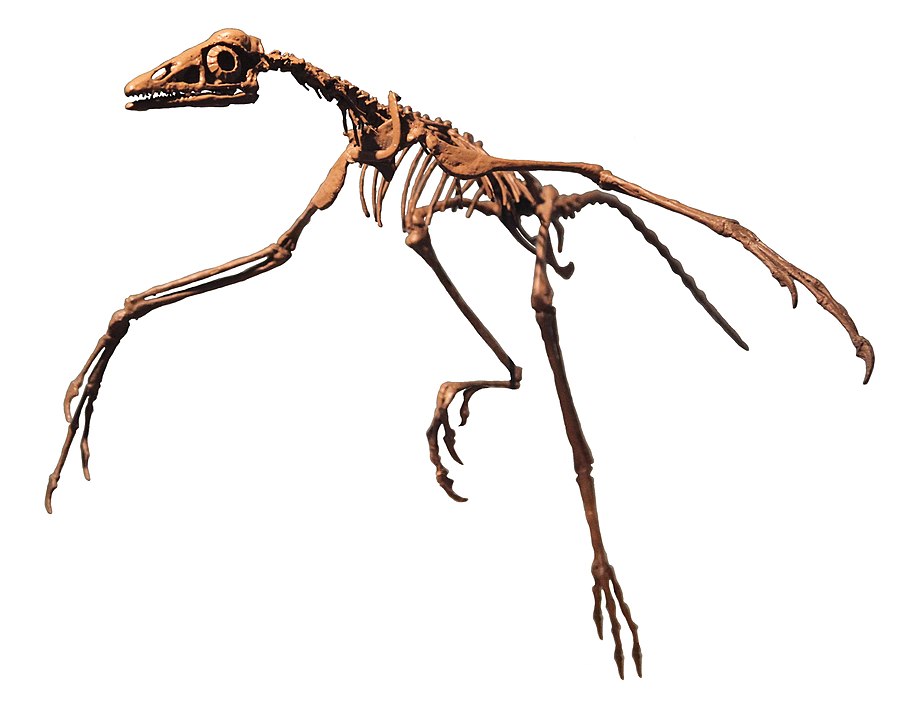
Young-earth paleontologists, however, believe that all biodiversity, past and present, can be traced back to distinct created kinds of lifeforms God brought into existence during Creation Week. The field of study called baraminology can help us determine which species belong to the same created kinds and which do not. Researchers have applied statistical analyses not only to Velociraptor itself, but to other dromaeosaurs, modern birds, and other dinosaurs.13 The conclusions derived from use of these methods suggest that Velociraptor belongs to the same created kind as other dromaeosaurs, troodontids, and possibly even Archaeopteryx. However, these same studies also found these creatures to be distinct from other non-avian dinosaurs or modern birds.
Fossils Out of Order
Conventional science education provides many illustrative portrayals showcasing a variety of extinct species meant to give us an idea about how powered flight evolved in dinosaurs. The problem with them, however, is that they do not reflect the order in which these animals appear in the fossil record.
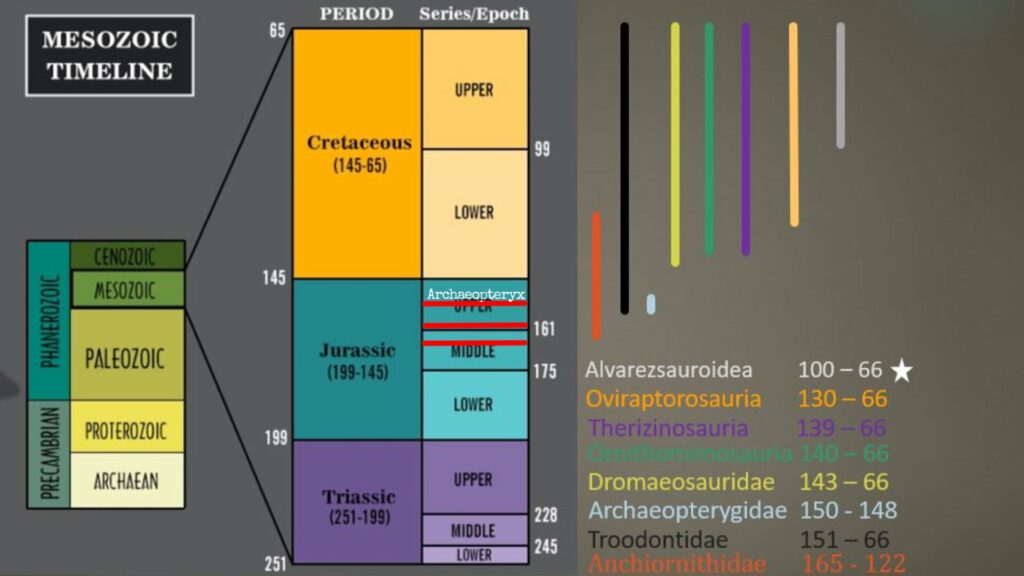
Dromaeosaurs are usually portrayed as being an early stage in the evolution of powered, feathered flight. But the irony is that they actually appear well after powered flight shows up in the fossil record, making standard evolutionary portrayals inconsistent with the data.12 Recent studies suggest that both Archaeopteryx and Microraptor, a type of dromaeosaur, were already capable of powered flight, and they appear in rock layers older than those containing dromaeosaurs like Velociraptor.14
Did Velociraptor’s Ancestors Used to Fly?
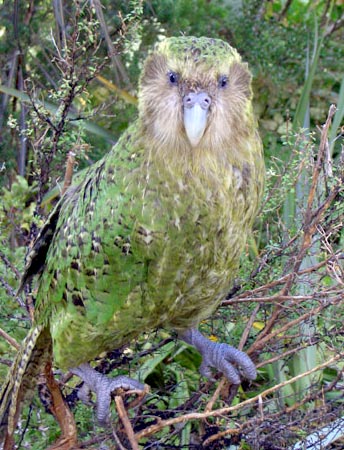
For the reasons expressed above, several young-earth paleontologists (and even some evolutionary paleontologists) have provided an alternative explanation. They suggest that animals like Velociraptor may have descended from an animal that could fly, but lost this ability over time.15,16
Interestingly, this scenario is similar to what has been proposed for certain ground-dwelling birds alive today. For example, nearly all parrots are fully capable of powered flight, and thus probably descended from original ancestors that could fly as well. However, the kakapo is a species of parrot that has lost the ability to fly. Its entire life is spent on the ground. From a creationist perspective, it is possible that Velociraptor’s ancestors underwent a very similar transformation. Perhaps they descended from ancestors that looked very much like Archaeopteryx and could fly. As generations passed, one or more lineages within this created kind became flightless.
Conclusion
An in-depth understanding of Velociraptor and its fossilized remains shows us that its portrayals in films like Jurassic Park do not reflect what the animal was really like. Nevertheless, Velociraptor was an incredible creature in its own right. Further study of its fossils has revealed that it was a far more dynamic than we ever imagined. It helped paleontologists realize just how bird-like some dinosaurs were. God’s creativity abounds throughout the things He has created. Velociraptor is another wonderful example, in all of its feathery glory.
Footnotes
- King, J. Logan; Sipla, Justin S.; Georgi, Justin A.; Balanoff, Amy M.; Neenan, James M. (2020). “The endocranium and trophic ecology of Velociraptor mongoliensis.” Journal of Anatomy. 237 (5): 861–869. ↩︎
- Schmitz, L.; Motani, R. (2011). “Nocturnality in Dinosaurs Inferred from Scleral Ring and Orbit Morphology.” Science. 332 (6030): 705–8. ↩︎
- Manning, P. L.; Payne, D.; Pennicott, J.; Barrett, P. M.; Ennos, R. A. (2006). “Dinosaur killer claws or climbing crampons?” Biology Letters. 2 (1): 110–112. ↩︎
- Ascari, S. H. (2021). Functional Morphology of Extinct Organisms: Using Shape Analyses to Decode the Function of Deinonychosaurid Killer Claws (Doctoral dissertation, Indiana University). ↩︎
- Curtice, B. (2022, November 04). Seriema – modern day velociraptor? Retrieved January 1, 2023. ↩︎
- Napoli, J. G.; Ruebenstahl, A. A.; Bhullar, B.-A. S.; Turner, A. H.; Norell, M. A. (2021). “A New Dromaeosaurid (Dinosauria: Coelurosauria) from Khulsan, Central Mongolia.” American Museum Novitates (3982): 1–47. ↩︎
- Turner, A. H.; Makovicky, P. J.; Norell, M. A. (2007). “Feather Quill Knobs in the Dinosaur Velociraptor.” (PDF). Science. 317 (5845): 1721. ↩︎
- Lü, J.; Brusatte, S.L. (2015). “A large, short-armed, winged dromaeosaurid (Dinosauria: Theropoda) from the Early Cretaceous of China and its implications for feather evolution.” Scientific Reports. 11775 (5): 11775. ↩︎
- Pittman M., Bell P.R., Miller C.V., Enriquez N.J., Wang X., Zheng X., Tsang L.R., Tse Y.T., Landes M., Kaye T.G. (2022). “Exceptional preservation and foot structure reveal ecological transitions and lifestyles of early theropod flyers.” Nature Communications 13, no. 1: 1-14. ↩︎
- Turner; Makovicky; Norell, (2007). (Footnote 7) ↩︎
- Ascari, S. H. (2021). Functional Morphology of Extinct Organisms: Using Shape Analyses to Decode the Function of Deinonychosaurid Killer Claws (Doctoral dissertation, Indiana University). ↩︎
- Brusatte, S. L., Lloyd, G. T., Wang, S. C., & Norell, M. A. (2014). “Gradual assembly of avian body plan culminated in rapid rates of evolution across the dinosaur-bird transition.” Current Biology, 24(20), 2386-2392. ↩︎
- McLain, M.A., M. Petrone, and M. Speights. (2018). “Feathered dinosaurs reconsidered: New insights from baraminology and ethnotaxonomy.” In Proceedings of the Eighth International Conference on Creationism, ed. J.H. Whitmore, pp. 472–515. Pittsburgh, Pennsylvania: Creation Science Fellowship. ↩︎
- Pei, R., Pittman, M., Goloboff, P. A., Dececchi, T. A., Habib, M. B., Kaye, T. G., Larsson, H. C., Norell, M. A., Brusatte, S. L., & Xu, X. (2020). “Potential for powered flight neared by most close avialan relatives, but few crossed its thresholds.” Current Biology, 30(20), 4033-4046. ↩︎
- Turner, A. H.; Makovicky, P. J.; Norell, M. A. (2007). “Feather Quill Knobs in the Dinosaur Velociraptor.” (PDF). Science. 317 (5845): 1721. ↩︎
- McLain; Petrone; Speights. (2018). (Footnote 13) ↩︎

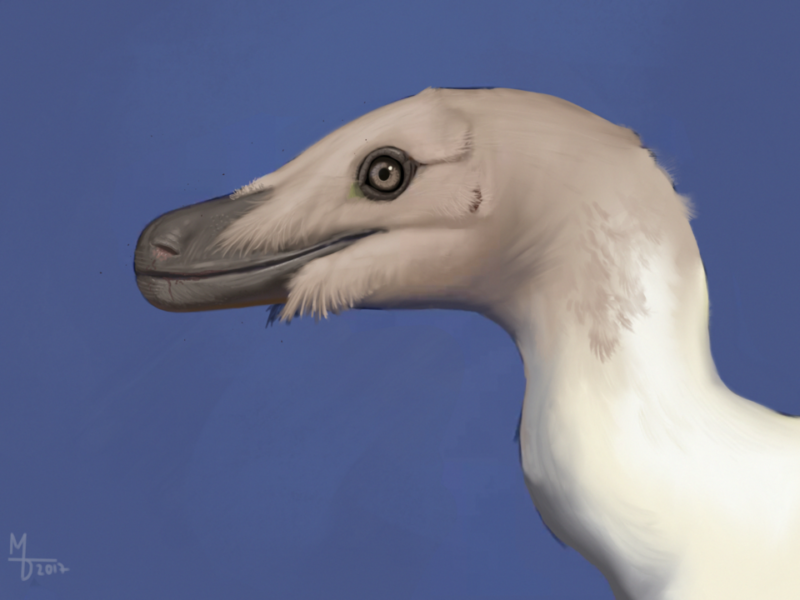




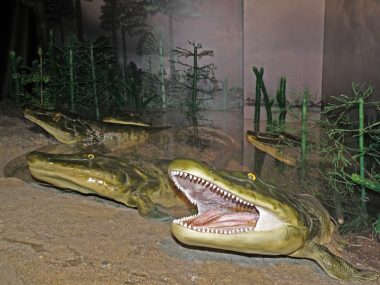
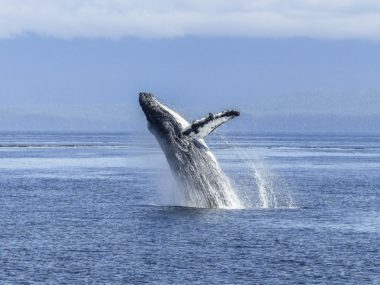




It should be noted that there are a variety of Mesozoic birds that even evolutionists do not believe were the ancestors of modern birds. There is a distinct gap between fossils of the earliest modern birds and any potential ancestral fossils.
We also see features in bats which clearly place them among mammals, but there is no fossil or living species which show any signs of developing the ability to fly. There are many living and fossil species which show an ability to glide or “parachute” but there are no signs of any of them developing powered flight.
So there’s no problem with some dinosaurs having birdlike traits, the problem is with evolutionists telling a story about them gradually evolving the ability to fly, contrary to biophysics and the pattern of fossils.
Excellent summery and well researched and well written. I loved this. I love this because I never before saw a creationist writer come close-ish to seeing these theropod dinos are very very bird like. so close the option is possible with the conclusion I insist is true. There were no theropod dinos or dinos. these are just BIRDS. They are flying birds from creation week that after the fall became flightless ground birds. YES yes they had wishbones and feathers because they were birds and not reptiles or dinosaurs. just dumb birds. Yes they had tail and teeth but its just a spectrum of diversity.. at the ark they rebooted to the original kinds and were taken in the ark as flying birds. After the flood no teethy birds were needed. bY the way they do find admired flying birds with teeth in fossil.
Creationists must become dinosaur slayers but realizing there were no dinosaurs. its all been incompetent interpretation since the 1800.s.
Only birds have wishbones surely. T rex was a giant flightless ground bird with atrophied wings or arms that never grew as t rex grew.
is Christian Ryan saying theropod dinos were birds only? I hope so or open to the idea.
I would suggest that we stop calling feathered creatures dinosaurs.
The term dinosaur is very broad (since evolutionary biologists tell us that it now includes birds) and this is a result of evolutionary cladistics.
My working hypothesis is that there are at least two kinds of feathered creatures; birds and some “theropods” possibly all dromaeosaurs.
Some of these were secondarily flightless, like the ostrich and the extinct moa (which grew very large) and velociraptor. The smaller ones could / can fly and some extinct flying dromaeosaurs appear to have had four wings.
Its very unlikely there would be two types of feathered creatures etc. Why not do the simple first answer and say birds and theropods are the same creatures. We don’t see the so called theropods but only fossils. Well good enough for the first conclusion. A creationist should conclude they were just birds , however weird, and not dinosaurs at all. There was never a reason to segregate them. Just a lack of imagination in the v1800’s about how birds could have a few extra traits like teeth and bony tail. yet as this article so well shows they were so bird like its unneeded to separate them into flying reptiles. the wishbone really does tell the tail and not the tail. CREATIONISTS must and will destroy the myth of dinosurdom. it was all mis classification of just existing types of creatures slightly different before the flood.
Robert,
You first have to define bird.
If anything with feather is a bird then it is simple.
By that definition birds are a very diverse group.
My criteria for defining bird excludes the theropods.
Its not about feathers but is and must be about a bodyplan. A Ostrich has a bodyplan like a bird despite being flightless, missing some bones for that too, and so on. its still a bird that did fly in its past and was on the ark as a flying bird.
birds are diverse in bodyplans. However they all have wishbones and only them except theropods. just wiki wishbone. This article itemizes how bird like the theropod was. Bingo. it was a flightless ground bird and should be the default/first conclusion when found in fossils. however incompetently they decided it was reptile because they were too impressed by a tail and teeth. flyinf birds with teeth were later found however. As tools, money, people got bbetter at looking at the fossils WHOOPS its so bird like its clear especially it should be to creationists. THIS IS ANOTHER DUMB GIANT FLIGHTLESS GROUND BIRD. its not a dinosaur nor roared like one. In fact there was no dinosaurs but thats another subject.
YOU are forced to say bodyplans are identical in unrelated creatures if you say a theropod is not a bird. you must say wishbones are not a birds exclusive trait but this strange other creatures trait too!! that is against probability in biology and in a god created world that only admitted to kinds. not divisions in creatures.
I predict organized creationism in the future will embrace the theropod as a pre flood bird that took to the ground and will alsi lead to the demise of the dinosuar myth. no spacerocks but better analysis o. Hope you are also ahead of the curve. Lets beat bthe evolutionists to this.
I love learning from creation scientists, not getting this info when I was in school. They didn’t teach these truths.